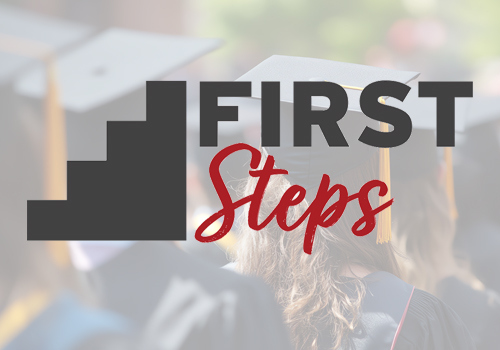Tackling Student Debt Wisely
11/21/2025
By: Madi Reynolds

For many students and recent graduates, student debt is their first major financial responsibility—and often the most intimidating. But with the right information and a few smart strategies, repayment can become manageable and even empowering. Jessica Laraway, Senior Personal Banker at First Federal, shares guidance to help borrowers take control of their loans with confidence.
Know Your Loans: Federal vs. Private
Jessica’s first recommendation is simple but essential: understand what kind of loans you have. Federal student loans, issued by the U.S. Department of Education, come with built-in protections such as flexible repayment options, interest subsidies on certain loans, and potential forgiveness based on income, career path, or repayment history.
Private student loans, by comparison, function more like traditional loans from banks, credit unions, or online lenders. They typically offer fewer flexible repayment options and do not qualify for federal forgiveness programs. Understanding which of your loans are federal versus private helps you choose the right repayment strategy, estimate your future payments, and prioritize which balances to pay down more aggressively.
Smart Strategies for Making Extra Payments
You don’t need a big budget to start reducing your loan balance. Jessica recommends using “found money”—extras like tax refunds, bonuses, overtime pay, cash gifts, or refunds from school or housing—to make additional payments without cutting deeply into your monthly budget.
Even small adjustments can make a big impact. Rounding your payment up to the nearest ten dollars or cutting a low-impact expense—such as skipping one weekly coffee or canceling an unused subscription—and putting that extra amount toward your balance can help reduce what you owe over time. Because interest is typically charged on your current balance rather than the original amount, extra payments reduce the principal faster, limiting how much interest can accumulate later. The sooner you start, the more you save.
Understanding Income-Driven Repayment and Forgiveness
For borrowers with federal loans, Income-Driven Repayment (IDR) plans can offer significant relief. These plans base your payment on your income and family size, often lowering payments substantially—and sometimes reducing them to $0. After 20 or 25 years of qualifying payments (or as few as 10 years for certain public-service careers), any remaining balance may be forgiven.
Some professions may also qualify for additional programs, such as Public Service Loan Forgiveness (PSLF) or Teacher Loan Forgiveness for those working in low-income schools. Borrowers should also remember to recertify their income each year to keep payments accurate and avoid higher amounts from interest.
Building Good Habits Before Graduation
Jessica recommends that students begin preparing for repayment while still in school. This starts with staying organized: track each loan’s servicer, interest rate, and estimated monthly payment. A simple spreadsheet or loan-tracking app can prevent confusion later.
Another helpful strategy is to set aside the amount you expect your future loan payment to be and place it in a savings account each month. This builds both financial discipline and a helpful savings cushion for after graduation.
How First Federal Supports Borrowers
Managing student debt can feel overwhelming, but you don’t have to navigate it alone. At First Federal, we offer no-fee checking, credit-builder loans, secured credit cards, budgeting guidance, and personalized financial support tailored to young adults. Stop by a branch today. Whether you're still in school, newly graduated, or starting your first job, our team is here to help you build a strong financial foundation—one step at a time.”
